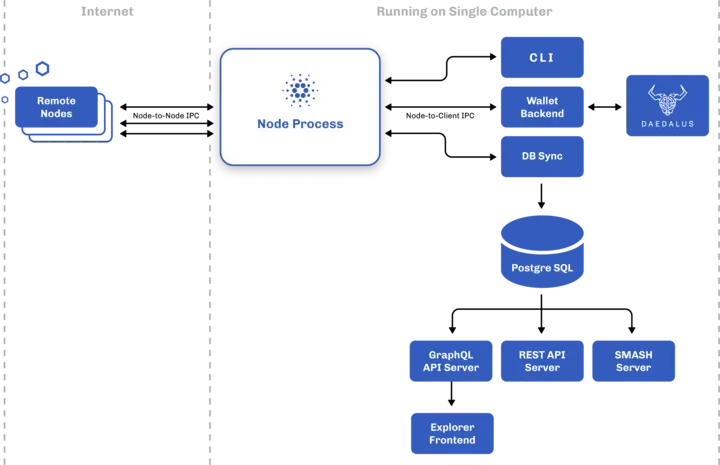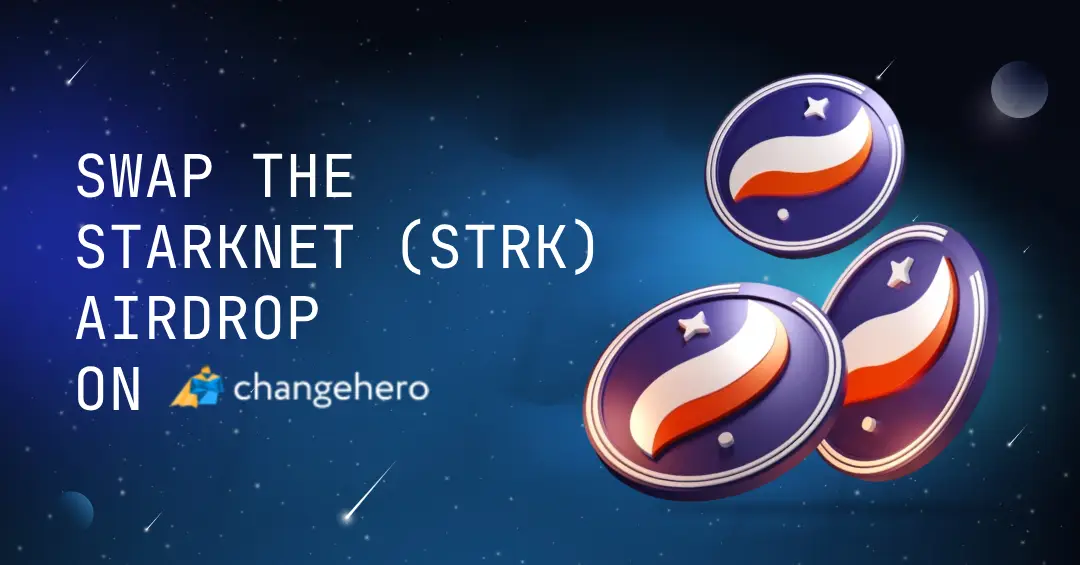Ethereum may be the go-to smart contract network but it doesn’t mean it is perfect. In fact, it has so many problems that there are a host of alternatives to Ethereum, each aiming to improve the concept. One of them is Cardano, and in this guide you will find what is Cardano and ADA in easy terms.
Key Takeaways
- Cardano is a smart contract blockchain platform working by the principle of a decentralized world computer;
- ADA is a cryptocurrency native to the Cardano blockchain. It is needed to transfer value within this network and secure it in a Proof-of-Stake algorithm;
- Cardano is still a work in progress. The next stages of completing the network will further decentralize the governance and enable more applications to be built.
What is Cardano?

Cardano is an open-source smart contract blockchain platform. Since smart contracts are self-executing programs that work when certain conditions are met, Cardano aims to become a decentralized global computing network. Even though it is a decentralized system, the transactions need to be checked and approved, and blockchains use the consensus of nodes for this purpose. Unlike Ethereum or Namecoin, Cardano is secured with a Proof-of-Stake consensus protocol specification called Ouroboros.
Ouroboros
In the Ouroboros consensus protocol, transactions are checked and secured by stake pools. Any ADA holder can participate in one by delegating an ADA wallet, making it accessible and decentralized. Ouroboros uses a combination of random selection and prioritization of the largest stakes. The more a staking pool has locked, the higher the chances of producing a new block and reaping rewards, but it is never guaranteed. The accounting periods, which last five days, are called epochs. At the start of each epoch, a snapshot is taken, so the delegated stake won’t start earning yield immediately. Like any other PoS consensus mechanism, Ouroboros is more energy and cost-efficient than Proof-of-Work algorithms that use mining.
Architecture

The Cardano blockchain protocol is highly modular: a single client has a complex structure. The most important components of it are the node, command line interface (CLI), Daedalus wallet, and database synchronization. The node software communicates with other nodes in the blockchain network, as well as with other software on the computer. This can include wallets, explorers and more data sources for the blockchain. The transactions are queried, signed and sent by the CLI tool. It communicates with the node software to broadcast transactions to the Cardano settlement layer.
Daedalus is a full-node wallet that consists of both frontend and backend. Users’ ADA is managed with this module. Finally, the database sync is a module that helps query historical information from the blockchain. This information is separated from the nodes to keep Cardano blockchain lightweight and is accessible through a Structured Query Language (SQL) database.
Programming Languages
The Cardano blockchain platform itself uses a special functional programming language called Haskell. With it, programming using pure functions is possible, and it has extensive testing and simulation capabilities. Developers create verifiable smart contracts on Cardano in Plutus, which is based on Haskell. With a domain specific language (DSL) for Plutus called Marlowe, it is possible to write financial products, which opens up use cases for native ADA tokens.
Cardano’s History and Team
Cardano’s blockchain technology is one of the most well-researched blockchains out there. The developers build on peer-reviewed research, and there is no single white-paper for the Cardano platform. One of the key contributors to the research and development of Cardano is Charles Hoskinson. After having taken key roles in the Bitcoin Association and the foundation of Ethereum, he founded Input Output Hong Kong (IOHK) in 2015. Another key contributor is Jeremy Wood, co-founder and Chief Strategy Officer at IOHK. With Emurgo Co., founded in 2017, the two companies lead Cardano’s development. Last but not least, there is a non-profit organization called Cardano Foundation. It promotes the use of the Cardano Protocol, as well as protects intellectual property pertaining to it.
The mainnet launch and the start of Byron era happened in September 2017. The second era called Shelley started in July 2020 and introduced the current staking rules. At the time of writing, Cardano is already in the third era dubbed Goguen, with two more to come. The next eras are called Basho and Voltaire and will improve scalability and governance respectively. Once Basho rolls out, sidechains and sharding will become possible; Voltaire improvements are going to include an on-chain treasury.
What is Cardano (ADA)?
As we have previously mentioned, there is a native cryptocurrency enabling some of the most important functionalities of Cardano, called ADA. Like the eras and the network itself, it takes its name after a famed mathematician and the first computer programmed, Ada Lovelace. The initial distribution prior to the mainnet launch was held from September 2015 to January 2017. Instead of going for the ICO on Ethereum, the Cardano Foundation distributed vouchers that were redeemable in the Daedalus wallet. 25.9 billion ADA were distributed in the public token sale, and 5.2 billion was allocated to IOHK (2.46B), Emurgo (2.07B) and the Foundation (648M).
The supply is coded to inflate at a decreasing rate until it hits the 45 billion mark. Even though a transaction in Cardano can be deemed complete once it is included in a block, the best practice is to wait for 10 or even 15-30 blocks. With a block time of up to 20 seconds, it means waiting for up to 10 minutes for good measure.
Cardano devs are taking a slow approach to increase the capacity of the network: in anticipation of smart contracts, they bumped the block size up to 72KB. At the current specs, Cardano potentially can process up to 250 transactions per second (TPS). With the network activity as it is now, the actual TPS is closer to 2. To scale for more transactions going forward, the developers are working on other Cardano projects such as layer-two scaling solutions: one of them is Hydra.
What is ADA Used For?
Now that you know what Cardano blockchain and ADA are, what is their use case?
- Transacting within the Cardano network and pay transaction fees. At the time of writing, the fees make it more attractive than competitors ($0.29 median fee);
- Staking Cardano. By design, staking ADA tokens is as easy as to delegate one’s coins to a staking pool. The yield comes up to 5.94%. By staking, you commit resources to validate transactions for a reward;
- Use the dApps on the Cardano ecosystem.
Comparison with Similar Projects
The most obvious comparison is Cardano vs Ethereum. For the time being, the most obvious difference between the two blockchain networks is the consensus algorithm, with Cardano’s being more efficient. Therefore, Cardano is a more scalable blockchain by design.
Another blockchain protocol also called “Ethereum killer” that also use Proof-of-Stake. One of them is Binance Smart Chain, which is closer to Ethereum in its structure and does not have Cardano’s modularity.
A blockchain that comes close to doing what Cardano can do is Tezos: it also has a modular architecture and utilizes a Delegated Proof-of-Stake to verify transactions. Since it supported smart contracts on launch and has been longer on the crypto market, it has more established dApps and token contracts than Cardano.
What is Cardano criticised for?
Proof-of-Stake algorithms have always been criticized for being less secure and more centralized than Proof-of-Work. Back in 2018, Ethereum’s co-creator Vitalik Buterin argued that there are several attack vectors unaccounted for in Cardano’s algorithm. Even though at the time the developers admitted the vulnerability exists, Cardano has never been attacked by bad actors.
During the Byron era, the majority of nodes were controlled by the three companies contributing to Cardano. Two eras later, this is no longer the case but nonetheless, the stake system implies the concentration of wealth.
Partnerships and Future Plans
With plenty of peer-reviewed research still left to build upon, there are two more eras currently in development, as well as the finalization of the current era. These global updates have no set date as of yet but in the closer future, Emurgo is going to develop SDKs for dApp development. Blockchain software developer Five Binaries is going to assist with the development of its first phase.
Cardano blockchain is preparing for the next major upgrade Vasil, due around late September 2022. In a nutshell, this upgrade will increase the transaction capacity and security of the network. In addition, Plutus will be further modified for dApp development. The upgrade is named after a late Cardano ambassador, Vasil St. Dabov.
Cardano on Social Media
#Cardano is ahead. What makes it interesting is that many do not realize how that could be possible.$ADAhttps://t.co/PfCH6VJlaN
— Dan Gambardello (@cryptorecruitr) September 6, 2022
Dan Gambardello made a video with everything happening to Cardano lately: news, price analysis and insights.
🔥 We have good news for the #CardanoCommunity!
— DappRadar (@DappRadar) September 5, 2022
🎯 @Cardano is coming to DappRadar (the world's biggest dappstore) soon!
➡️ If you are a #Cardano dapp developer, you can already submit your dapp contracts here: https://t.co/UIRvmMx0Jb @CardanoStiftung @jpgstoreNFT $ADA pic.twitter.com/WZ6iaDzHMp
DApp tracking service DApp Radar introduced a knowledge base for apps on the Cardano platform.
VASIL UPGRADE: DATE CONFIRMED 💪
— Input Output (@InputOutputHK) September 2, 2022
Following the successful completion & extensive testing of all core components, plus confirmed community readiness, we along with @cardanostiftung can today announce 22nd September for the #Vasil upgrade on the #Cardano mainnet. 🧵$ADA
1/9
Input Output published a thread detailing all things to know about the upcoming hard fork. The consensus voting is underway for pools that stake ADA to prepare for it.
What is the Best ADA Wallet?
Now that you have seen Cardano and ADA explained, you might want to get some practical advice. In addition to the [full node] (https://github.com/input-output-hk/cardano-wallet) wallet Daedalus, there is a mobile wallet Yoroi by Emurgo, designed specifically for Cardano. However, you can use a single wallet for multiple currencies as well.
As a major cryptocurrency , ADA is supported by almost all multi-coin wallets. We recommend Exodus because you can stake Cardano and exchange ADA with ChangeHero right in your wallet. If you value security, hardware wallets are the way to go. Trezor devices have the best reputation for a reason, and the Trezor Suite client lets you manage and swap your cryptocurrencies.
How to Exchange ADA on ChangeHero?
How do you get Cardano cryptocurrency? Quickly and easily on ChangeHero! Check the instruction how to buy ADA below:
- Choose the currencies on the home page, amounts and the type of exchange. Provide your wallet address in the next step and check the amounts;
- Double-check the provided information, read and accept the Terms of Use and Privacy Policy;
- Send in a single transaction the sum of cryptocurrency you will be exchanging. Fixed Rate transactions have a 15-minute limit;
- And now, relax! We are doing all the work: checking the incoming transaction and doing the exchange as soon as it arrives;
- As soon as the exchange has been processed, your ADA are on the way to your wallet. Your feedback is always welcome!
Customer support is available 24/7 in chat on our website or through the email: [email protected].
Conclusion
We hope you have a clear understanding to what is Cardano after reading our guide. ADA holders have high expectations to the first dApps to launch on the blockchain platform, which is reflected in the price action.
If you enjoyed this article, you can find more guides, predictions and crypto news coverage in our blog. And don’t forget to subscribe to ChangeHero on social media: Twitter, Facebook, Reddit and Telegram.








